By Todd Proctor
I first saw Allen Sarlo surf when I was 12 years old. It was a summer day at Malibu in 1984, back when the creek used to let out up at Third Point, and the sand filtered down along the groomed cobbles, creating fast, perfect rippable, world-class waves that connected for 300 yards or more. A phenomenon — and a golden era for the famed point long steeped in rich surf history; and one that saw the El Niños of the ’80s blast so much sand down the point that Rabbit Bartholomew had claimed the ‘Bu as the “best high performance small wave pointbreak in the world.”
It was on one of these days, during a weeklong sizeable six-foot Southern Hemi swell; my sister had just dropped me off down at First Point at the gap in the Adamson Wall to check it. I remember the perfection of it all. It was like looking through a timeless portal at a lineup where for a moment life itself stood still; my young brain burned a permanent mind photo that day of the oily glassy conditions, zero wind, the smell of the salt in the air, the sun piercing from the south, and the crisp sound of sculpted lips cracking peeling green perfection as sets marched their way across towards the pier. The peaceful spirit of the ancient Chumash seemed to permeate the air.
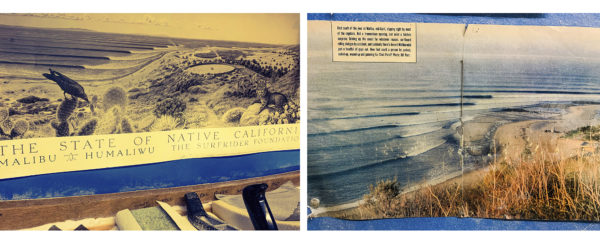
Images that remind me of malibu’s golden era that I️ keep tacked up on the wall in my shaping room. – Todd
As I scrambled to get out there, the shadow of a huge figure came lumbering down the stairs. It looked like the Incredible Hulk, some kind of superhero, maybe even a bit werewolf; but definitely not human. My grom buddy whispered to me, “Whatever you do don’t look now, but that’s Allen Sarlo. He’s the best out here, he gets all the best waves, and he can crush your skull with one hand!”…and it was all true, except thankfully I never got my skull crushed.
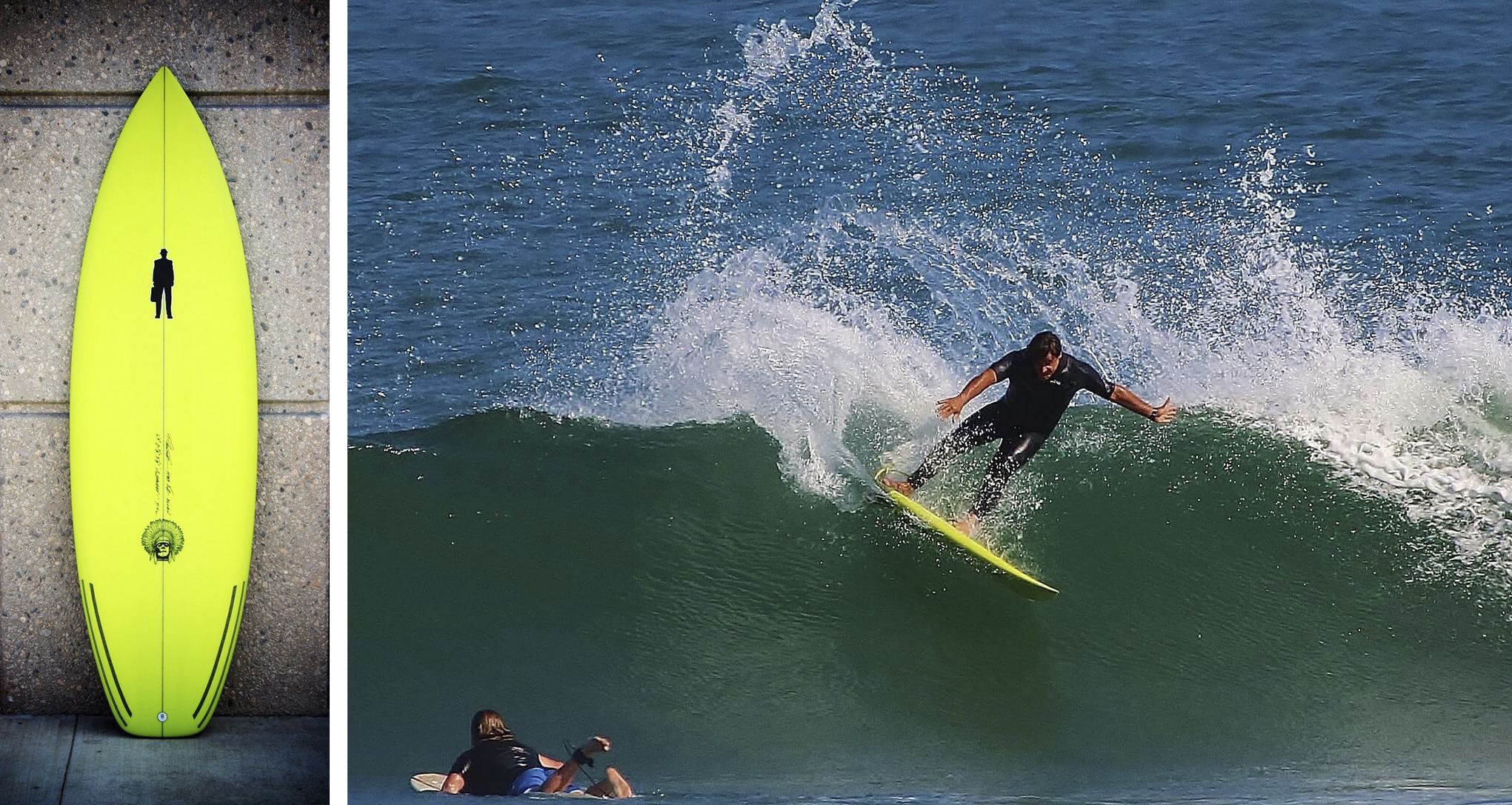
Photo: Ben Tomson
They called Allen (and still do) the “Wave Killer” because nobody went faster and threw bigger sprays. If you got stuck behind him on a wave, the trench his bottom turns made would buck you off your board like a boat wake. Allen spent a lot of time in Hawaii early on, and was one of the first guys to charge big Backdoor in the late ’70s and early ’80s when everyone went left because the right at Pipe wasn’t yet considered an actual surfable wave. He was on both the IPS and ASP world tours and was one of the original Venice Beach Dogtown Z-Boys. He was also one of the first guys to give a face to big-wave surfing along with his close friend Mark Foo. It was actually at Mark Foo’s house on my first trip to the North Shore in 1990 that I first met Allen. He said, “Hey I know you — what are you doing here? Then he says, “Ahh, so you decided to leave the rat race and get some real waves huh?”
Flash forward a couple decades later, I had became a shaper in my late teens and was now in it for life. And Allen says to me one day, “Hey, come by my house — I wanna show you my garage. It’s full of every board I’ve ever had…let’s look through the different ones and I can tell you what does and doesn’t work for me. And let’s do a board.” It’s led to many boards since and a fun design process — but most important of all, a cherished friendship.
So back at Allen’s house, it was like a museum. There were handshaped Al’s from the early ’80s, a multitude of boards from the now extinct Blue Hawaii, a couple Diffenderfers, Jeff Ho’s, Rodstokers, Rawsons, Con Surfboards, R.Sleighs, Zuma Jays, and the list could go on for some time as I think there was close to 200 boards stashed in the rafters, on the walls, in racks, piled up in corners; boards everywhere. He pulled out different ones and would be like, “This one has good drive, but too much nose rocker and is hard to get into waves.” Or, “This one has the perfect volume and dimensions for paddling into anything, but it’s too loose in turns”….”This one turns insane, but I can’t make it across flat sections”…”this one flies, but it’s too light when I come off the bottom it loses speed”…
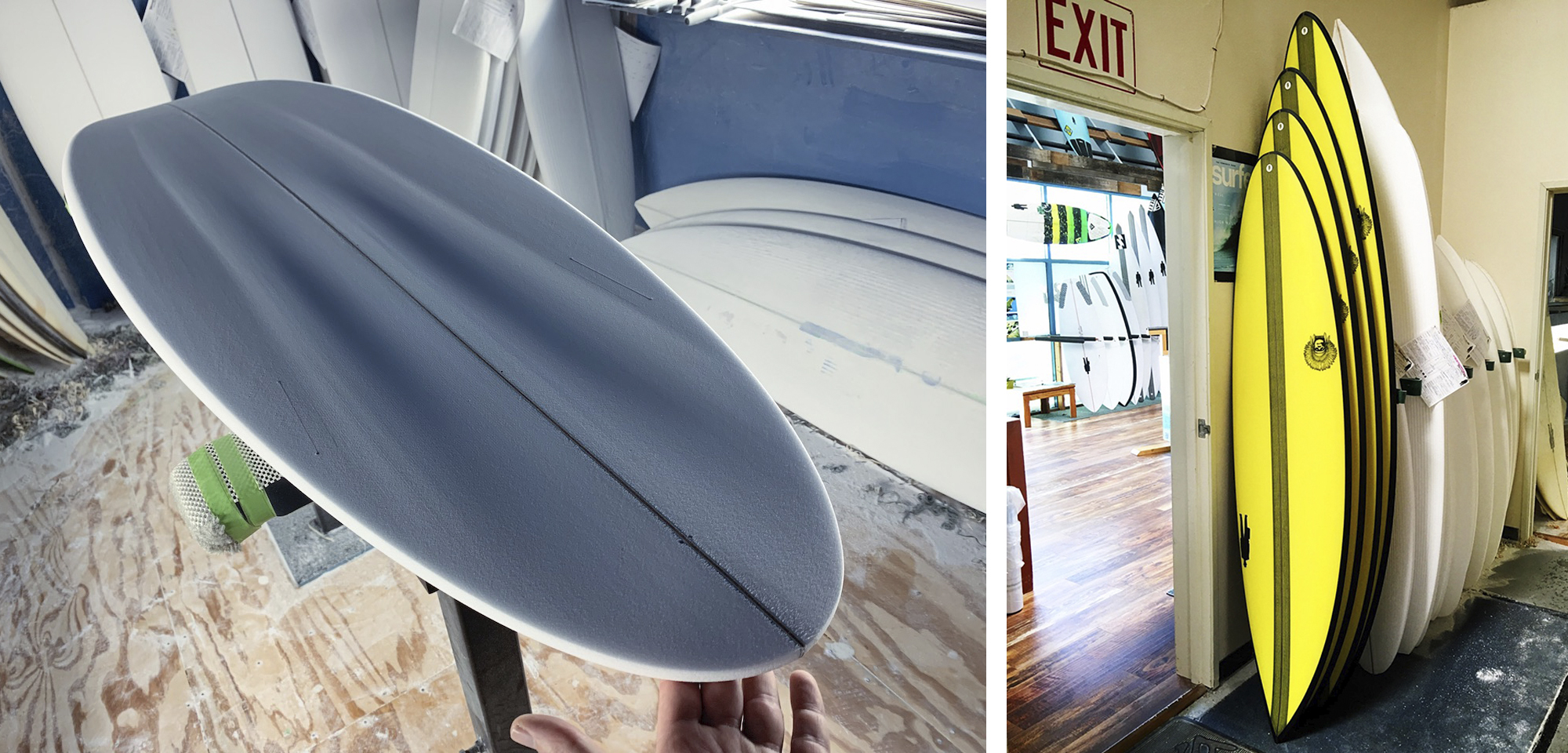
Proctor’s unique hull contours that generate speed, grip & glide.
So we looked around at what aspects of the various designs had worked through the years, and which aspects needed to be updated. Much the same process when working with anyone I’ve never built a board for prior. We establish a baseline and work from there: what dims and volume paddles best, what kind of rocker suits their wave and their particular style and approach to that wave, and a planshape that matches their build/body type and body mechanics. In Allen’s case, there has been a full rotator cuff replacement and a full knee replacement. Eventually every surfer has an injury/recovery story, so it’s always important to take those things into consideration when putting together a one-off custom design. Hull contours, rail shape, fin placement also follow suit, playing major roles.
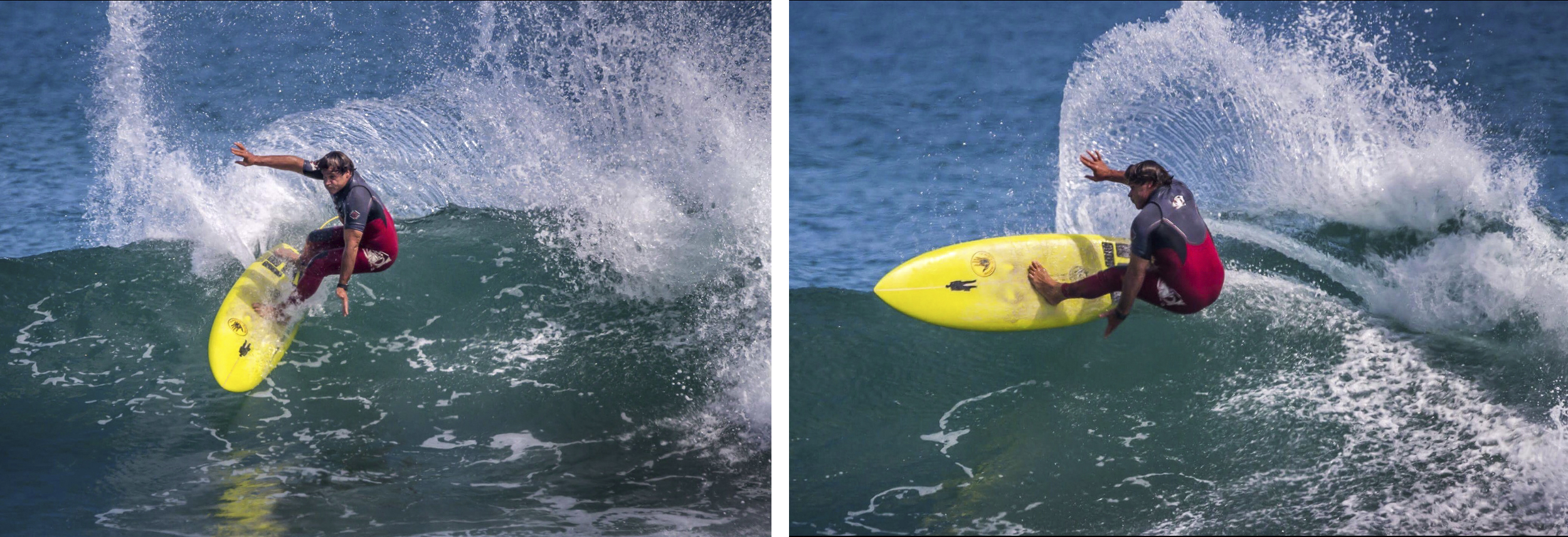
Photos: Courtesy Allen Sarlo
Our baseline started with the Monstachief design. A board I had already been doing for a few years to fill a gap; a need for bigger guys and power surfers to have an alternative shortboard design made appropriate to their build so they didn’t have to resort to funshapes or longboards if they didn’t want to.
I knew a lot of surfers from the ’80s and ’90s that were rippers, and in that 200-250+ lbs range. A lot of them had to quit surfing for many years when they started families. And when they came back to it many years later, the moves were still in there, but the body didn’t necessarily follow the way they remembered. So the Monstachief came to be. Not just a resized big version of a chippy shortboard, but all the appropriate geometry and design built from the ground up to cater to those big guys who still had the grit, but needed the right equipment to get them where they wanted to go. So as to give larger-framed surfers a platform that would use their stature as an advantage rather than a disadvantage; to create fun for a cross-section of the tribe that was getting overlooked. You can watch the breakdown of this design here:
Like each surfer I work with, Allen’s boards are designed and tuned specifically for him. Allen continues to this day to be the King of the Point through healthy living, surfing, kiteboarding or foiling every day. He runs a successful business, and operates off the motto “work to surf”. He takes an active role with the Mauli Ola foundation. His wife’s a sweetheart and both his grown children are mellow, kind people that shred. In his own words Allen says, “There is almost no better feeling than sharing the love of surfing with friends and family. Surfing keeps us young. We found the fountain of youth surfing. Thank you for the magic boards Todd, much appreciated. I’m surfing better than ever on your boards.”
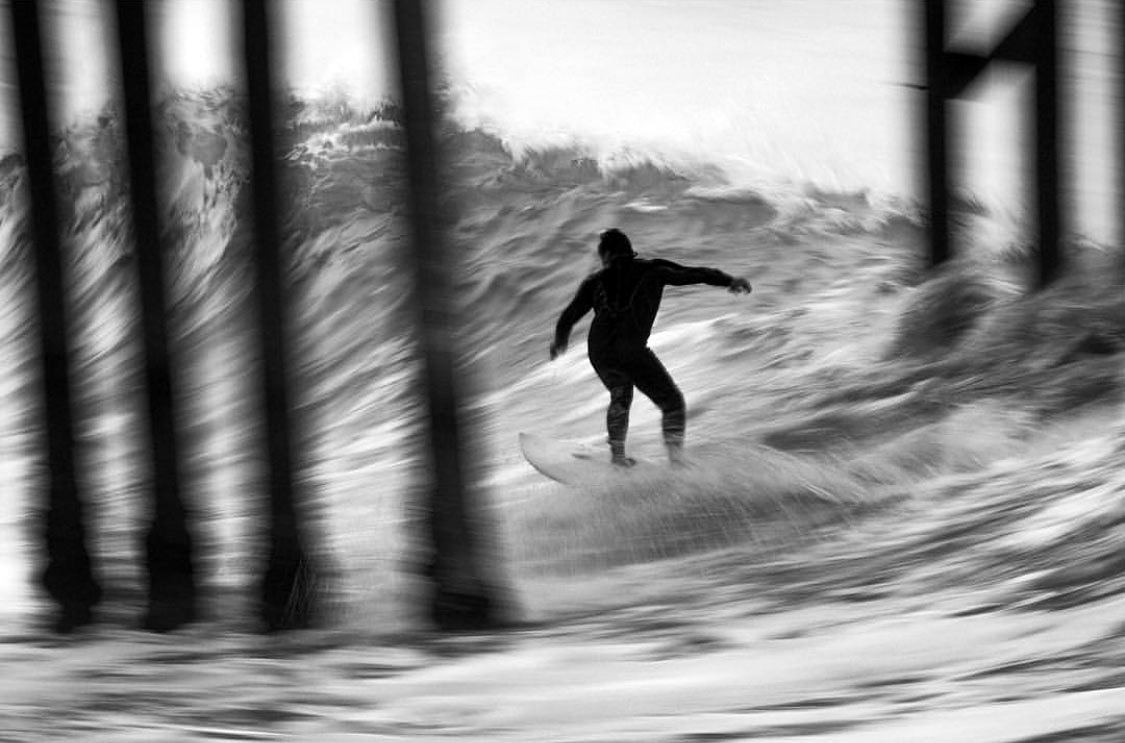
At 62, still shooting the pier, for over 40 years. Photo: Trent Stevens
As a tribe we must remember the past, know our people, design the future, and honor the elders. This is a board design that seeks to do just that. – Todd
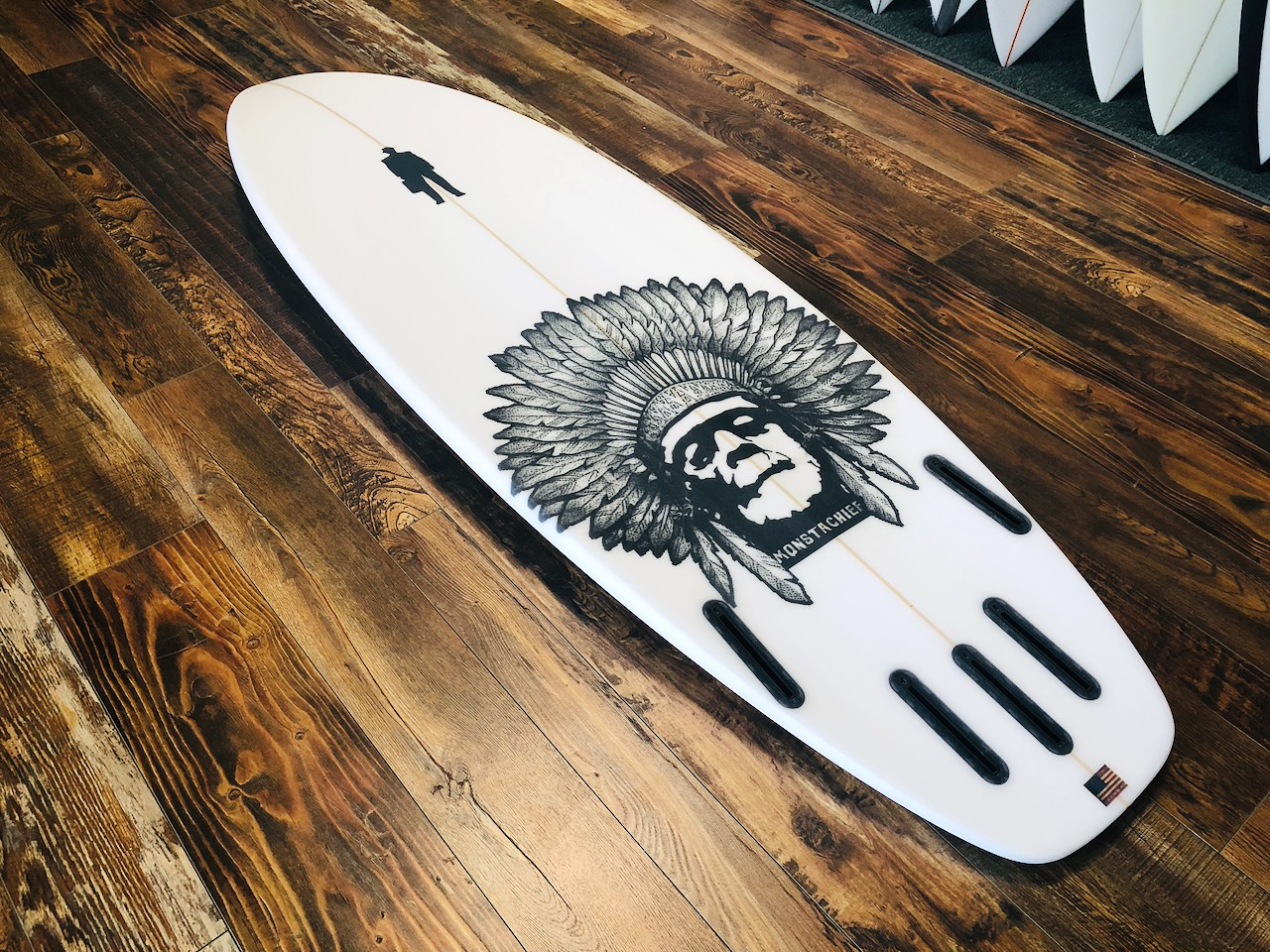


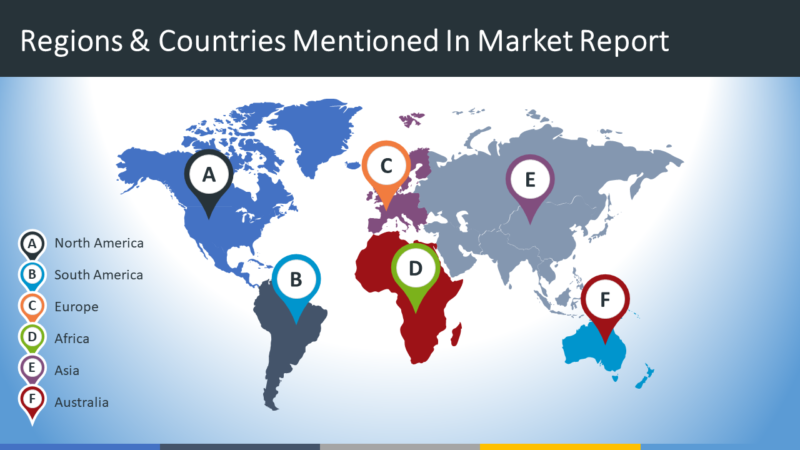

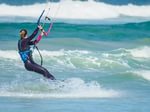
Recent Comments